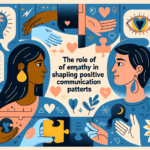
Healing Young Minds: Proven Treatments for Neurodevelopmental Disorders
Introduction
In a world increasingly aware of mental health and neurodevelopmental challenges, the conversation around effective treatments for children has never been more critical. For millions of families, the path to discovering effective therapies can be fraught with confusion, misconceptions, and a lack of accessible information. The phrase "Healing Young Minds: Evidence-Based Treatments for Neurodevelopmental Disorders" captures both the urgency and hope embedded in this journey. Understanding these disorders—ranging from autism spectrum disorders to attention deficit hyperactivity disorder (ADHD)—is essential for parents, educators, and healthcare professionals alike. In this article, we will explore proven, evidence-based treatments that are making a difference in the lives of children and their families.
Understanding Neurodevelopmental Disorders
Neurodevelopmental disorders impact brain function, leading to issues with learning, behavior, and communication. Common examples include autism spectrum disorders, ADHD, and learning disabilities. Understanding these conditions is the first step toward effective treatment.
Common Neurodevelopmental Disorders
- Autism Spectrum Disorder (ASD): A complex condition characterized by challenges in social interaction, communication, and repetitive behaviors.
- Attention Deficit Hyperactivity Disorder (ADHD): A condition marked by inattention, hyperactivity, and impulsivity.
- Learning Disabilities: Disorders that affect the ability to understand or use spoken or written language.
In the following sections, we will explore treatments supported by rigorous research and clinical practice.
Evidence-Based Treatments for Neurodevelopmental Disorders
1. Behavioral Therapies
Behavioral therapy, particularly Applied Behavior Analysis (ABA), is one of the most well-researched treatments for children with ASD.
Case Study: The Johnson Family
The Johnsons sought ABA therapy for their son, Ethan, diagnosed with ASD at age four. After six months of intensive ABA sessions, Ethan’s ability to communicate increased significantly, and his social skills improved through structured play sessions.
Analysis: This case illustrates how targeted intervention can lead to substantial gains in communication and social interaction, critical areas affected by neurodevelopmental disorders.
Key Takeaway: ABA is a structured approach that emphasizes positive reinforcement, making behavioral therapies a cornerstone of effective treatment.
2. Medication Management
Although medication should not be the first line of treatment, certain cases warrant pharmacological intervention. For ADHD, stimulants like methylphenidate have been proven effective.
Chart: Medication Efficacy for ADHD
| Medication | Efficacy Rate | Common Side Effects |
|---|---|---|
| Methylphenidate | 70-80% | Insomnia, appetite suppression |
| Amphetamines | 70-80% | Anxiety, stomachaches |
Case Study: Mia’s Experience
Mia, an eight-year-old diagnosed with ADHD, showed marked improvements in her focus and classroom behavior after starting a low dose of methylphenidate. Her teachers reported a significant turnaround in her ability to complete assignments.
Analysis: This underscores the importance of personalized treatment plans, where medication can complement behavioral interventions.
3. Occupational Therapy (OT)
OT focuses on helping children develop skills necessary for daily living. For those with sensory processing issues, tailored interventions can lead to significant improvements.
Case Study: Max’s Journey
Max, diagnosed with sensory processing disorder alongside ASD, underwent occupational therapy that included sensory integration techniques. His parents noted that he became more comfortable in social situations and expressed himself better.
Analysis: OT not only assists in skill development but also encourages independence and social interaction.
4. Speech and Language Therapy
For many children with neurodevelopmental disorders, communication challenges can be overwhelming. Speech therapy helps in building language skills and improving communication abilities.
Case Study: Emma’s Progress
Emma, who struggled with verbal communication, began speech therapy at age six. With consistent practice and family involvement, she progressed from limited phrases to engaging in full conversations.
Analysis: This highlights that speech therapy can significantly enhance social engagement, which is crucial for emotional development.
5. Parental Training and Support
Engaging parents in the treatment process is vital. Training sessions can empower families to support their children’s development effectively.
Key Takeaway: Programs that include parent training can lead to longer-lasting behavioral improvements and foster supportive home environments.
The Role of Multidisciplinary Teams
The complexity of neurodevelopmental disorders often necessitates a collaborative approach involving various specialists. These teams may include pediatricians, psychologists, special educators, and occupational therapists who work together to tailor comprehensive treatment plans.
Benefits of a Team Approach
- Comprehensive Care: Addresses multiple aspects of a child’s development.
- Continuity of Information: Ensures consistent messaging and supports across different environments (home, school).
- Enhanced Outcomes: Increases the likelihood of achieving the desired behavioral and developmental milestones.
Conclusion
The landscape of treatments for neurodevelopmental disorders is vast and nuanced. While challenges exist, significant advancements in evidence-based approaches offer hope and healing for young minds. Families equipped with knowledge about these treatments can advocate for their children effectively, fostering an environment where they can thrive.
Creating tailored strategies that incorporate behavioral therapies, medication, occupational therapy, and family support plays a crucial role in managing these conditions.
Inspirational Takeaway
As we move forward, let us embrace the idea that every child possesses the potential to overcome challenges. With the right support and interventions, we can nurture not just healing young minds but also empowered individuals ready to make their mark on the world.
FAQs
1. What are the most common neurodevelopmental disorders in children?
The most common include autism spectrum disorders, ADHD, and learning disabilities. Each can present unique challenges but benefit from targeted treatments.
2. How can I find the right treatment for my child?
Consulting with healthcare professionals specializing in neurodevelopmental disorders is crucial. They can recommend evidence-based treatments tailored to your child’s needs.
3. Are medications safe for children with neurodevelopmental disorders?
When prescribed and monitored by a qualified healthcare professional, medications can be safe and effective. It’s essential to weigh the benefits and risks.
4. How can I support my child’s development at home?
Engaging in therapy activities, maintaining routines, and fostering an open dialogue about feelings can support your child’s development.
5. What should I do if I’m concerned about my child’s development?
Don’t hesitate to seek advice from a pediatrician or child psychologist. Early intervention can lead to better outcomes.
By understanding and applying these evidence-based treatments, we can heal young minds and pave the way for a brighter future.















